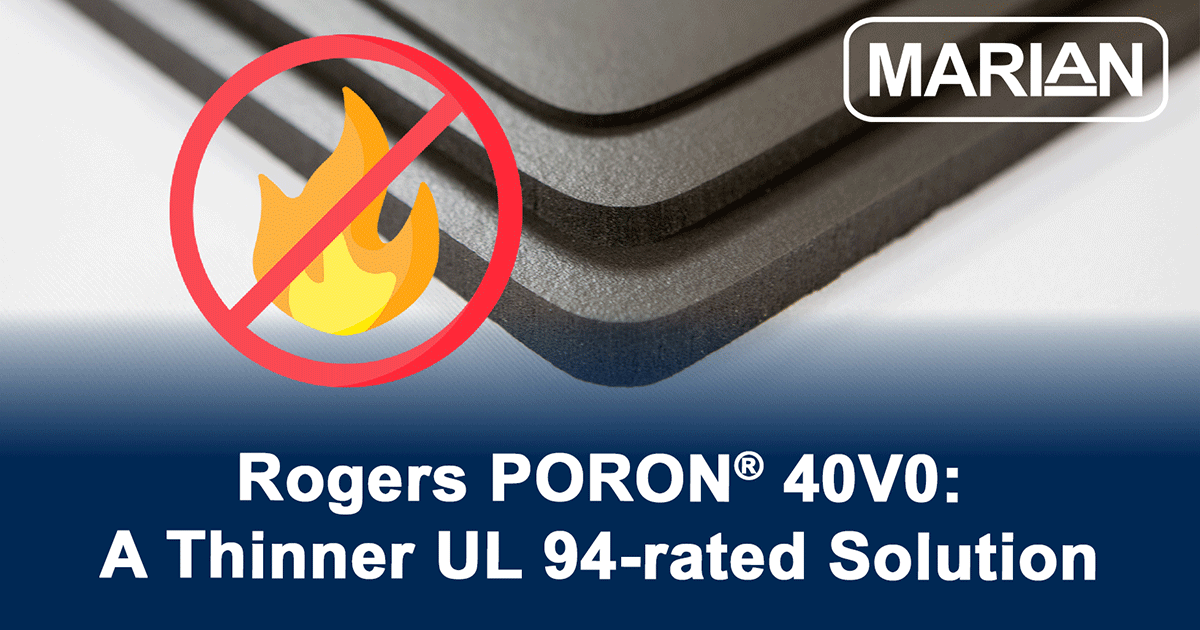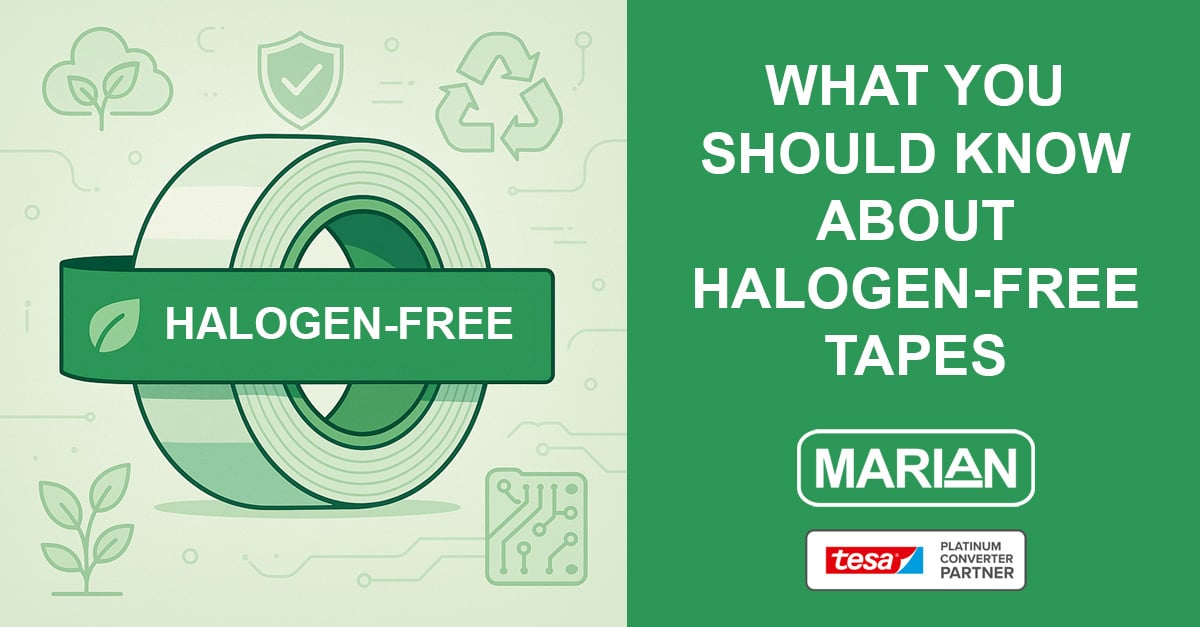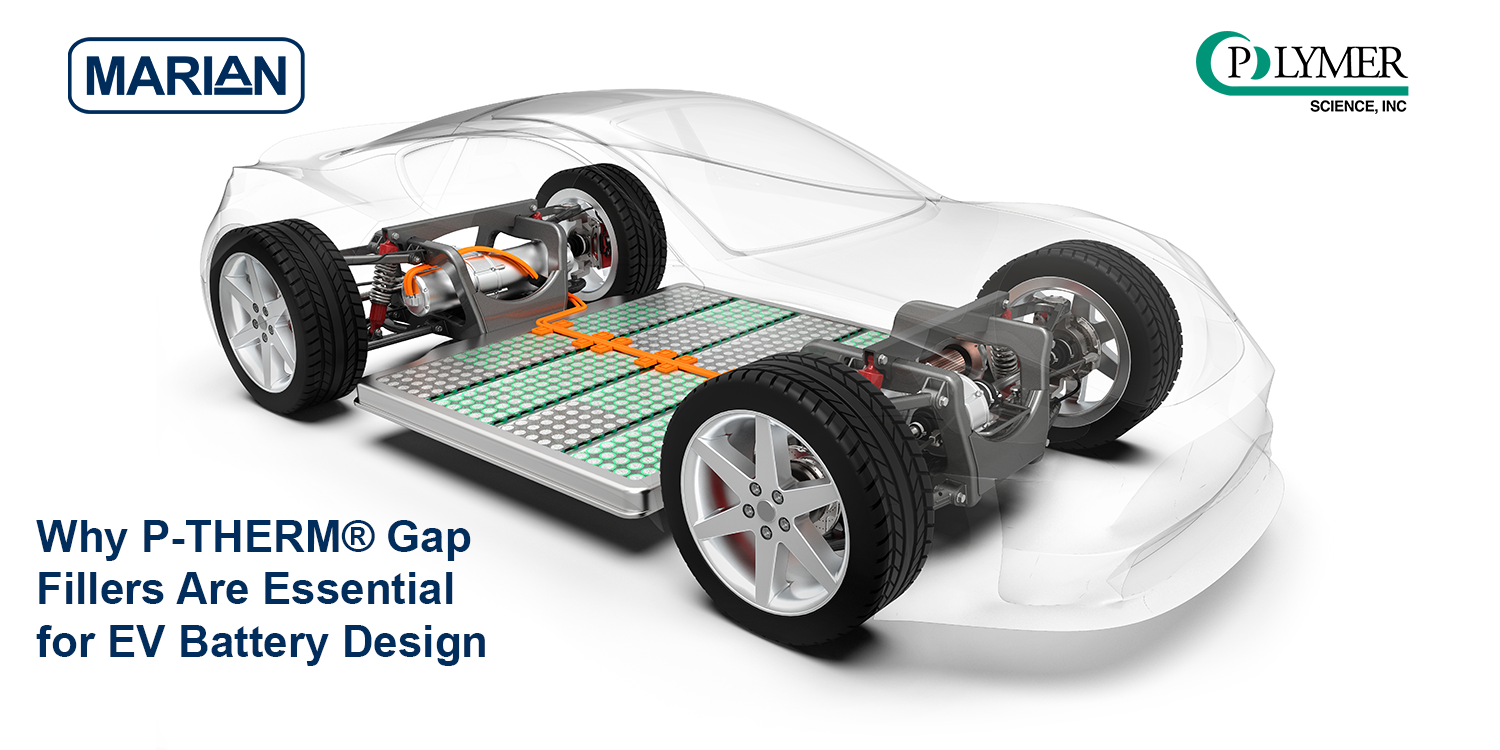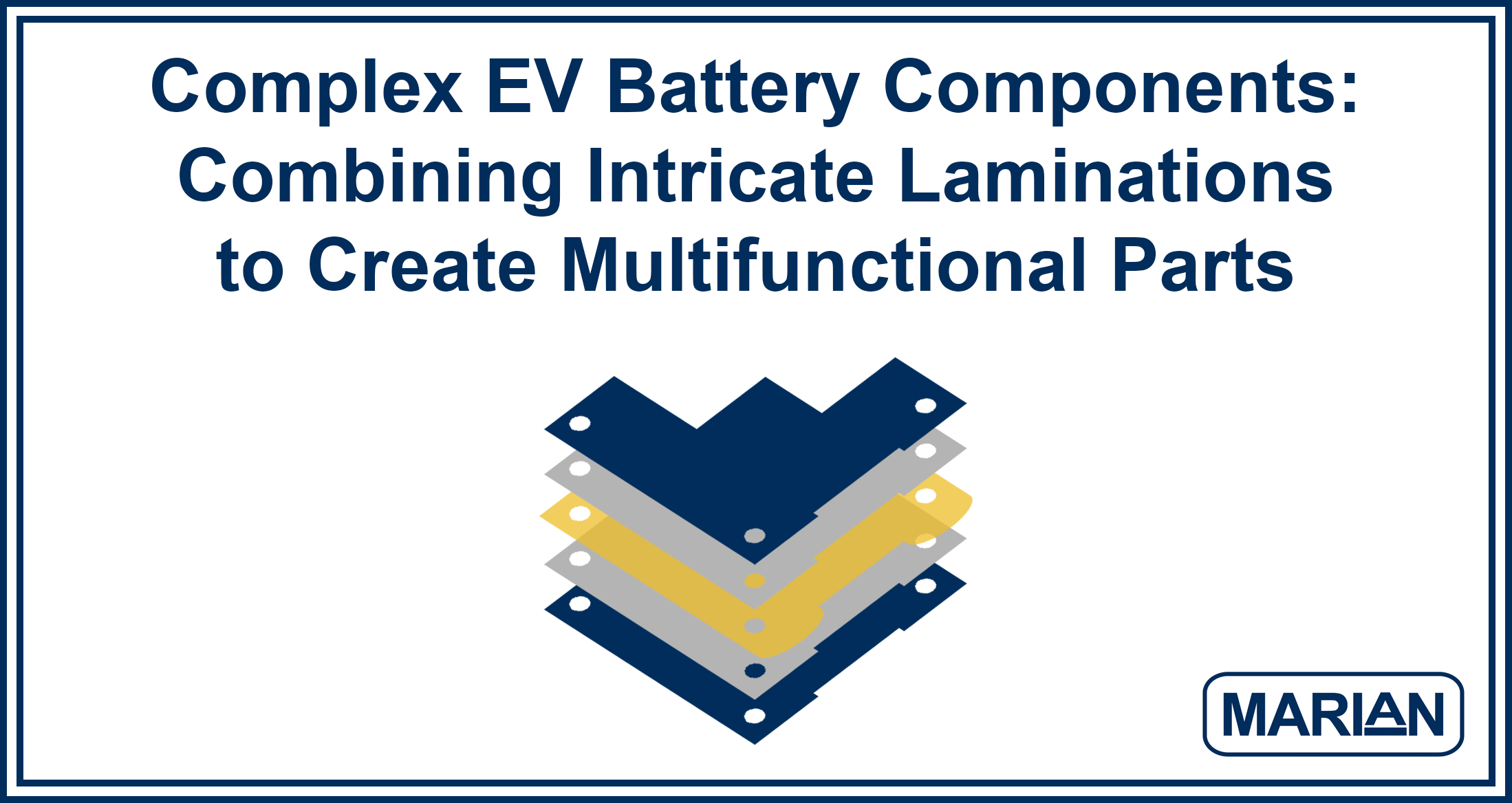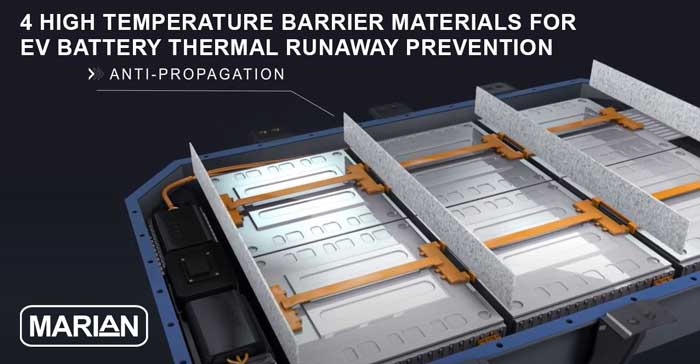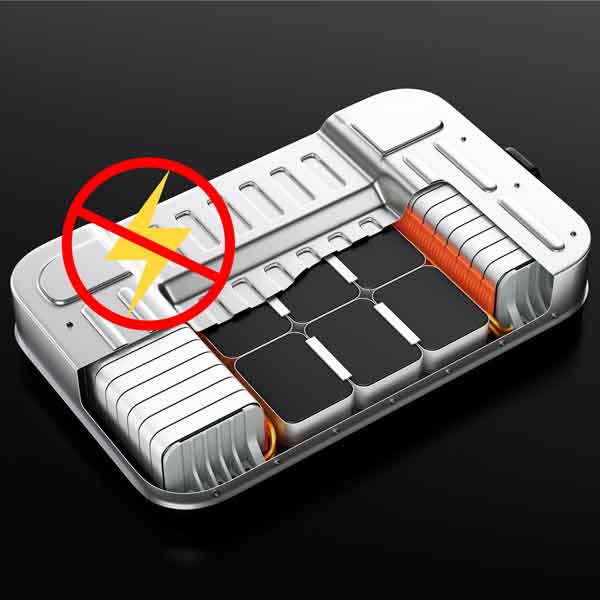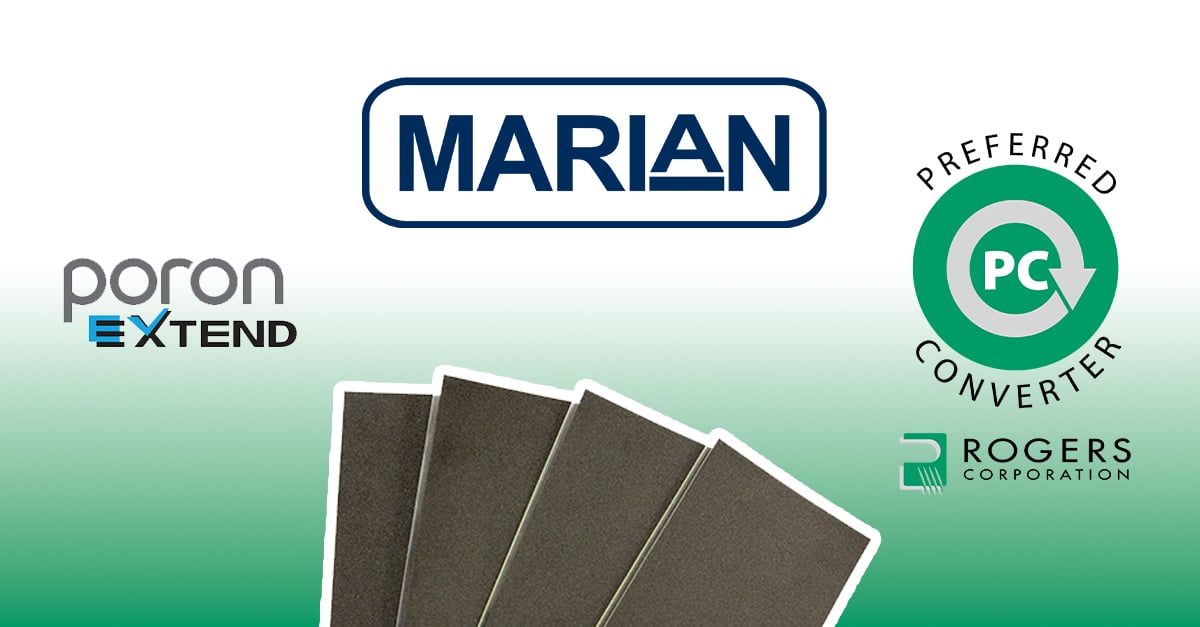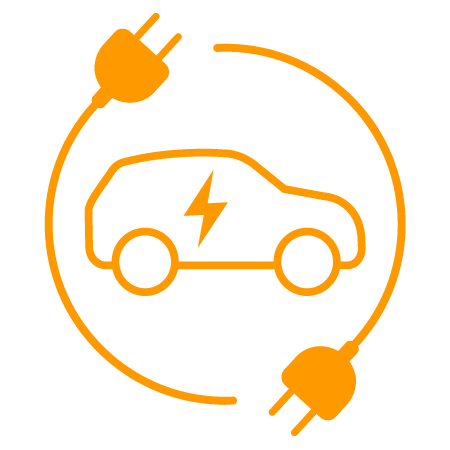Rogers Corporation’s PORON® 40V0 foam gives engineers a thinner, softer, and UL 94 compliant solution for gap filling and cushioning.
Unlike standard polyurethane foams, PORON 40V0 combines reliable flame resistance with enhanced compressibility in slimmer grades, making it ideal for space-constrained designs. It also meets strict environmental standards and minimizes contamination risks in critical applications.
Read More
Topics:
Thermal Management,
Foams,
Manufacturing,
PORON,
EV,
Battery,
Material selection,
Flame Barrier,
Automotive,
Sustainable Materials,
Rogers Corporation,
Data Center
Adhesive selection can be challenging, and it’s even more difficult in applications that generate heat like electronics, batteries, and more where the risk of fire is present. You can find many flame-retardant pressure sensitive adhesives on the market, but flame-retardant doesn’t necessarily mean halogen-free. So, if there are available options, why should you consider choosing a halogen-free tape?
Keep reading to see what classifies an adhesive as halogen-free, why you might consider a halogen-free tape in your next heat-generating application and learn more about some of the many halogen-free tapes available from tesa®.
Read More
Topics:
EV,
HEV,
Material selection,
PSA,
Converting,
Sustainable Materials,
Electronics,
Tesa
The rapid advancement of the electric vehicle (EV) market is no secret, and to keep pace with this progress, OEMs seek cutting-edge thermal management solutions that perform well and come at a reasonable cost.
Read More
Topics:
Thermal Management,
EV,
Battery,
Material selection,
TIM,
Thermal Gap Filler Pads,
Automotive,
Polymer Science,
Thermal Gap Pad
Combining Intricate Laminations to Create Multifunctional Parts
Electric vehicles (EVs) continue to experience a sharp growth trajectory, generating process advancements and additional application requirements and needs. Marian has developed improved solutions to meet the industry’s most critical necessities for battery longevity, performance, and passenger safety.
Read More
Topics:
Thermal Management,
EV,
Battery,
Die Cutting,
Thermal Pad,
PSA,
ITW Formex,
Assembly
Thermal Runaway Propagation Prevention with Thermal Barrier Materials
Hybrid and battery electric vehicles that use lithium-ion cells require these cells maintain specific ambient temperatures. "Thermal runaway" occurs as a result of the rapid rise in temperature within one of the battery cells.
One of the greatest challenges for battery design engineers is to manage heat. For this reason, batteries are designed with thermal management systems, like thermal gap pads and thermally conductive tapes, that provide different levels of protection, including cell-to-cell, module-to-module, and pack level.
Marian provides custom flexible die cut solutions that are incorporated into battery design at the cell, module and pack level to aid with thermal management. These die-cut parts are made with high temperature resistant materials (also known as flame barrier materials) that are designed to offer thermal insulation to delay the onset of thermal runaway.
Read More
Topics:
Thermal Management,
EV,
HEV,
Battery,
Flame Barrier
Improvements are being made to the lithium-ion batteries used in electric vehicles. Auto makers are developing more powerful lithium-ion batteries that have increased range and charge more rapidly. Along with these improvements, enhancing safety has becoming increasingly urgent for electric vehicle development.
As mentioned in our previous blog post, 11 Considerations when Selecting Thermal Interface Materials for Electric Vehicle Li-Ion Batteries, Li-ion batteries produce a significant amount of heat while in use and while charging. Along with the use of thermal management materials, placing protective engineered flame-retardant insulating materials between the components of the battery cell, module, and pack can offer additional thermal and electrical insulating protection. However, adding such materials can be challenging due to space and weight constraints.
In this post, we outline four materials that can enhance the safety of lithium-ion batteries used in electric vehicles. Some shared characteristics of these four materials are listed below.
- ultra-thin
- lightweight
- electrically and thermally insulating
- flame retardant
- can be die-cut and laminated with PSA
Read further for additional detail about each material.
Read More
Topics:
Thermal Management,
EV,
HEV,
Battery,
Material selection,
Insulators
Materials for Battery Solutions - PORON EVExtend®
One of our preferred material supplier, Rogers Corporation, has released PORON EVExtend® polyurethane foam material. This material is ideal for battery pads for EV/HEV li-ion pouch cell batteries. The EXExtend 4701-43HBF offers an increased flammability rating of HBF, or HF1 (product dependent).
Read More
Topics:
Foams,
PORON,
EV,
HEV,
Battery,
Material selection,
Thermal Gap Filler Pads,
Thermal Gap Pad
Currently, lithium-ion (li-ion) batteries are the most common type of battery used to power electric vehicles. Today's market is demanding that batteries charge faster and last longer. Because li-ion batteries produce significant heat when in use and charging, thermal management is critical. Excessive heat can cause irreparable damage to the battery.
Read More
Topics:
Thermal Management,
EV,
HEV,
Battery,
Material selection

